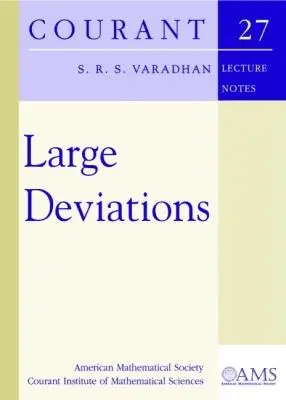Dekorationsartikel gehören nicht zum Leistungsumfang.
Sprache:
Englisch
117,95 €
UVP 139,09 €
Versandkostenfrei per Post / DHL
Lieferzeit 1-2 Wochen
Kategorien:
Beschreibung
This book presents a new way of thinking about quantum mechanics and machine learning by merging the two. Quantum mechanics and machine learning may seem theoretically disparate, but their link becomes clear through the density matrix operator which can be readily approximated by neural network models, permitting a formulation of quantum physics in which physical observables can be computed via neural networks. As well as demonstrating the natural affinity of quantum physics and machine learning, this viewpoint opens rich possibilities in terms of computation, efficient hardware, and scalability. One can also obtain trainable models to optimize applications and fine-tune theories, such as approximation of the ground state in many body systems, and boosting quantum circuits¿ performance. The book begins with the introduction of programming tools and basic concepts of machine learning, with necessary background material from quantum mechanics and quantum information also provided. This enables the basic building blocks, neural network models for vacuum states, to be introduced. The highlights that follow include: non-classical state representations, with squeezers and beam splitters used to implement the primary layers for quantum computing; boson sampling with neural network models; an overview of available quantum computing platforms, their models, and their programming; and neural network models as a variational ansatz for many-body Hamiltonian ground states with applications to Ising machines and solitons. The book emphasizes coding, with many open source examples in Python and TensorFlow, while MATLAB and Mathematica routines clarify and validate proofs. This book is essential reading for graduate students and researchers who want to develop both the requisite physics and coding knowledge to understand the rich interplay of quantum mechanics and machine learning.
This book presents a new way of thinking about quantum mechanics and machine learning by merging the two. Quantum mechanics and machine learning may seem theoretically disparate, but their link becomes clear through the density matrix operator which can be readily approximated by neural network models, permitting a formulation of quantum physics in which physical observables can be computed via neural networks. As well as demonstrating the natural affinity of quantum physics and machine learning, this viewpoint opens rich possibilities in terms of computation, efficient hardware, and scalability. One can also obtain trainable models to optimize applications and fine-tune theories, such as approximation of the ground state in many body systems, and boosting quantum circuits¿ performance. The book begins with the introduction of programming tools and basic concepts of machine learning, with necessary background material from quantum mechanics and quantum information also provided. This enables the basic building blocks, neural network models for vacuum states, to be introduced. The highlights that follow include: non-classical state representations, with squeezers and beam splitters used to implement the primary layers for quantum computing; boson sampling with neural network models; an overview of available quantum computing platforms, their models, and their programming; and neural network models as a variational ansatz for many-body Hamiltonian ground states with applications to Ising machines and solitons. The book emphasizes coding, with many open source examples in Python and TensorFlow, while MATLAB and Mathematica routines clarify and validate proofs. This book is essential reading for graduate students and researchers who want to develop both the requisite physics and coding knowledge to understand the rich interplay of quantum mechanics and machine learning.
Über den Autor
Claudio Conti is an associate professor at the Department of Physics of the University Sapienza of Rome. He authored over 250 articles in many fields, such as quantum physics, photonics, nonlinear science, biophysics, and complexity. His activity includes experiments and theory, such as the first observation of replica symmetry breaking mentioned in the scientific background of the Nobel prize in physics in 2021, the investigation of neuromorphic computing by quantum fluids, and the optical acceleration of natural language processing. Claudio Conti coordinates an experimental and theoretical group in Rome exploring the frontiers of artificial intelligence and physics.
Inhaltsverzeichnis
Chapter 1: Quantum mechanics and data-driven physics.- Chapter 2: Kernelizing quantum mechanics.- Chapter 3: Qubit maps.- Chapter 4: One qubit transverse-field Ising model and variational quantum algorithms.- Chapter 5: Two-qubit transverse-field Ising model and entanglement.- Chapter 6: Variational Algorithms, Quantum Approximation Optimization and Neural Network Quantum States with two-qubits.- Chapter 7: Phase space representation.- Chapter 8: States as a neural networks and gates as pullbacks.- Chapter 9: Quantum reservoir computing.- Chapter 10: Squeezing, beam splitters, and detection.- Chapter 11: Uncertainties and entanglement.- Chapter 12: Gaussian boson sampling.- Chapter 13: Variational circuits for quantum solitons.
Details
| Erscheinungsjahr: | 2024 |
|---|---|
| Fachbereich: | Theoretische Physik |
| Genre: | Mathematik, Medizin, Naturwissenschaften, Physik, Technik |
| Rubrik: | Naturwissenschaften & Technik |
| Medium: | Buch |
| Inhalt: |
xxiii
378 S. 43 s/w Illustr. 66 farbige Illustr. 378 p. 109 illus. 66 illus. in color. |
| ISBN-13: | 9783031442254 |
| ISBN-10: | 3031442253 |
| Sprache: | Englisch |
| Einband: | Gebunden |
| Autor: | Conti, Claudio |
| Auflage: | 1st edition 2024 |
| Hersteller: |
Springer International Publishing
Springer International Publishing AG |
| Verantwortliche Person für die EU: | Springer Verlag GmbH, Tiergartenstr. 17, D-69121 Heidelberg, juergen.hartmann@springer.com |
| Maße: | 241 x 160 x 28 mm |
| Von/Mit: | Claudio Conti |
| Erscheinungsdatum: | 03.01.2024 |
| Gewicht: | 0,77 kg |













